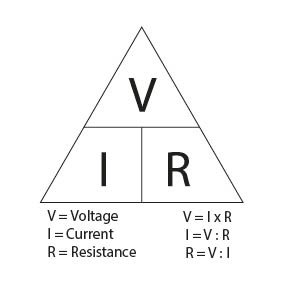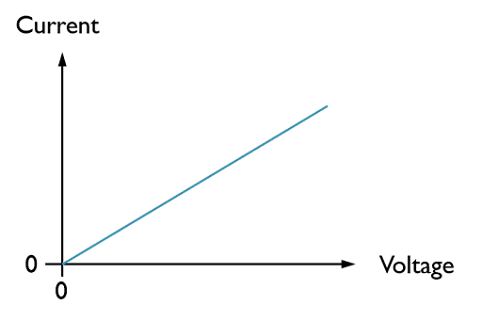When you’re diving into the world of electrical circuits, there are three core concepts you absolutely need to understand: current, voltage, and resistance. Think of them as the building blocks of everything electrical. Whether you’re just starting out or brushing up on the basics, having a solid grasp of these three will make everything else much easier. In this blog, we’ll explain what each one means, how they work together, and why they’re so important in any electrical system.

What is Current?
Definition
Current is the flow of electric charge through a conductor, typically measured in amperes (A). It represents how much electric charge is moving through a circuit at any given time.
Analogy
Imagine a water pipe. The current is like the flow of water through the pipe. Just as more water flows through a pipe if you increase the pressure, more electric current flows through a conductor if the voltage (or “pressure”) is increased.
Types of Current
- Direct Current (DC): The electric charge flows in one direction. Commonly found in batteries.
- Alternating Current (AC): The electric charge periodically reverses direction. This is the type of current supplied to homes and businesses.
Importance
Current is crucial because it determines how much power is delivered to a device. For example, a higher current can make a light bulb shine brighter or a motor run faster.
What is Voltage?
Definition
Voltage, measured in volts (V), is the difference in electric potential between two points in a circuit. It can be thought of as the “pressure” that pushes electric charges through a conductor.
Analogy
Returning to the water pipe analogy, voltage is like the water pressure. Higher pressure pushes more water through the pipe, just as higher voltage pushes more current through a circuit.
Types of Voltage
- AC Voltage: The voltage changes polarity periodically, as in household electricity.
- DC Voltage: The voltage remains constant, as in a battery.
Importance
Voltage is what drives the current through the circuit. Without sufficient voltage, electrical devices won’t operate correctly. For example, if you plug a 12V device into a 5V supply, it may not work because there’s not enough voltage to push the current.
What is Resistance?
Definition
Resistance, measured in ohms (Ω), is the opposition to the flow of electric current in a conductor. It determines how much current will flow for a given voltage.
Types of Current
If the water pipe represents the conductor, resistance is like the size or roughness of the pipe. A smaller or rougher pipe creates more resistance, making it harder for water to flow. Similarly, higher resistance in a conductor makes it harder for current to flow.
Factors Affecting Resistance
- Material: Conductors like copper have low resistance, while insulators like rubber have high resistance.
- Length and Thickness: Longer wires have more resistance, and thicker wires have less.
- Temperature: Resistance typically increases with temperature.
Importance
Resistance controls the amount of current in a circuit. Too much resistance can prevent devices from working, while too little resistance can cause excessive current, potentially damaging components.
How Do Current, Voltage, and Resistance Interact?
The relationship between current, voltage, and resistance is described by Ohm’s Law, one of the most important principles in electrical circuits:

This equation tells us that:
- If voltage increases and resistance remains the same, current increases.
- If resistance increases and voltage remains the same, current decreases.
For example, if you have a circuit with a 9V battery and a resistor of 3Ω, the current flowing through the circuit would be:

This equation is fundamental in designing circuits and selecting the right components.

Final Words
Current, voltage, and resistance—they’re the heart of every electrical circuit. Whether you’re just getting into electronics or you’ve been working with circuits for a while, these three concepts are the foundation of everything. Once you really understand how they connect (thanks to Ohm’s Law), you’ll be able to build, fix, and explore electrical systems with a lot more confidence.
Don’t worry if you forget something later—just come back to this guide whenever you need a quick refresher. And if you know someone else learning the basics, share it with them too. We’re all in this learning journey together!
